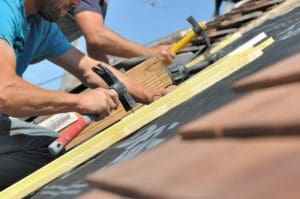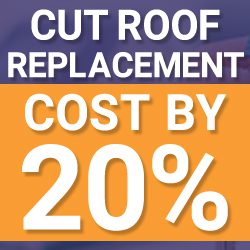
Understanding Roof Replacement Costs: What Homeowners Need to Know
For many homeowners, the roof is a significant but necessary investment. Understanding the costs involved in roof replacement is crucial for making informed decisions. This comprehensive guide will walk you through the various factors that influence roof replacement costs and offer insights to help you budget for this vital home improvement project.
The Importance of Roof Replacement
A sturdy, well-maintained roof is essential for the protection and overall integrity of your home. It shields your property from the elements, contributes to energy efficiency, and plays a key role in your home’s curb appeal. Over time, however, roofs wear down and may need replacement to maintain these benefits.
Roof replacement is more than just an aesthetic upgrade; it’s a critical investment in the safety, efficiency, and overall value of your home. Understanding the multifaceted importance of this project is essential for homeowners.
Essential Protection for Your Home
The primary role of your roof is to protect your home from the elements. An aging or damaged roof can lead to water leaks, which cause mold, rot, and structural damage. These issues can compromise the integrity of your home and lead to costly repairs. A new roof ensures that your home remains safe and secure from environmental hazards.
Energy Efficiency and Cost Savings
An often-overlooked benefit of a new roof is improved energy efficiency. Modern roofing materials are designed to reflect more sunlight and better insulate your home, maintaining a consistent indoor temperature. This reduces the strain on your heating and cooling systems, leading to significant savings on energy bills. A well-insulated roof also contributes to a more comfortable living environment.
Boosting Home Value and Curb Appeal
From a real estate perspective, a new roof increases your home’s curb appeal and market value. It’s a key selling point for potential buyers, who often view a new roof as a sign of a well-maintained home. This can be particularly important in competitive housing markets.
Preventing Health Hazards
Old, damaged roofs can lead to water intrusion, which creates an ideal environment for mold and mildew growth. These can cause health issues, particularly for individuals with allergies or respiratory problems. By replacing your roof, you help ensure a healthier living environment for you and your family.

Quality Professional Roof Replacement Matters
Opting for a professional roof replacement rather than a quick fix or DIY solution is critical for several reasons:
- Expertise and Experience: Professional roofers have the expertise and experience to identify and address underlying issues, ensuring a comprehensive solution rather than a superficial fix.
- Quality Materials: Professionals have access to high-quality materials that are more durable, efficient, and suitable for your specific climate and home design.
- Proper Installation: A roof’s performance and lifespan are heavily dependent on the quality of installation. Professional roofers ensure that the roof is installed correctly, adhering to industry standards and local building codes.
- Warranty and Peace of Mind: Professional roof replacement typically comes with a warranty for both materials and labor. This offers peace of mind, knowing that your investment is protected.
- Safety: Roofing is a high-risk job, requiring expertise in safety protocols. Professional roofers have the equipment and training to perform the job safely, reducing the risk of accidents.
Roof replacement is a crucial home improvement project that goes far beyond aesthetics. It protects your home from environmental damage, improves energy efficiency, enhances curb appeal, and can increase your home’s resale value. By choosing a professional for your roof replacement, you ensure that the job is done right, providing long-term protection and value for your home.
Factors Influencing Roof Replacement Costs
Understanding the various factors that impact the cost of roof replacement is crucial for homeowners. It helps in budgeting accurately and ensures you are making informed decisions about this significant investment.
Roof Size and Complexity
The size of your roof is one of the primary determinants of cost. Roofing contractors typically charge by the roofing square (100 square feet). The larger the roof, the more materials and labor are needed, increasing the cost.
Complexity plays a significant role too. A roof with multiple levels, steep slopes, or unique architectural features requires more time and labor, leading to higher costs. Such designs may demand additional safety equipment and more intricate work to navigate angles and edges.



Roofing Materials
Material choice is another critical factor affecting cost. Common roofing materials vary widely in price:
- Asphalt Shingles: The most economical option, preferred for their balance of cost and durability.
- Metal Roofing: More expensive than asphalt but offers longevity and energy efficiency.
- Tile and Slate: These are premium materials with higher price points, known for their aesthetic appeal and durability.
Your choice should align with your budget, aesthetic preference, climate, and how long you plan to stay in the home.
Removal of Existing Roof
If your project involves removing an old roof, this will add to the cost. The more layers that need to be removed and the heavier the existing materials, the higher the labor and disposal costs.
Labor Costs
Labor can account for a significant portion of roof replacement costs. This varies based on the complexity of the job, the contractor’s experience, and your geographical location. Choosing experienced professionals ensures quality work, which is more cost-effective in the long run.
Geographical Location
Location influences cost in several ways. Labor rates vary by region, and so do the costs of materials. Furthermore, local building codes and permit requirements can also affect the overall price.
Additional Features and Repairs
Features like skylights, chimneys, and ventilation systems can increase the complexity and cost of a roof replacement. Additionally, if structural repairs are needed – such as fixing rafters or decking – this will also add to the total cost.
Ensuring You’re Getting the Right Price
To make sure you’re getting a fair and accurate price for your roof replacement:
- Get Multiple Quotes: Always obtain quotes from several reputable contractors to compare prices and services.
- Check References and Reviews: Look at past work and seek reviews from previous customers to gauge the quality of the contractor’s work.
- Understand the Quote: Ensure the quote is detailed and includes all aspects of the job – materials, labor, removal of the old roof, and any additional features or repairs.
- Beware of Extremely Low Bids: While it’s tempting to go for the lowest bid, it may not always be the best. Extremely low bids could mean lower quality materials or workmanship.
- Discuss Warranties and Guarantees: Understand the warranties offered by both the manufacturer of the materials and the roofing contractor for labor.
- Avoid Large Upfront Payments: A reasonable deposit is standard, but avoid contractors who demand a large portion of the cost upfront.
Roof replacement is a significant but necessary investment. By understanding the factors that influence its cost and knowing how to evaluate and compare quotes, you can make a well-informed decision that balances quality, durability, and cost-effectiveness.


Understanding Roofing Materials and Their Costs
Choosing the right material for your roof replacement is a decision that significantly affects both the cost and the long-term performance of your roof. Each material comes with its unique set of characteristics, advantages, and price points.
Asphalt Shingles
- Overview: Asphalt shingles are the most popular roofing material in many regions due to their cost-effectiveness and decent lifespan. They come in various styles and colors, making them versatile for different home designs.
- Cost Factors: The cost of asphalt shingles varies depending on the quality and type. Architectural shingles, which are thicker and offer a more dimensional look, are more expensive than basic 3-tab shingles.
- Lifespan and Maintenance: Typically, asphalt shingles last about 20-30 years. They require minimal maintenance but may need more frequent replacement than some other materials.
Metal Roofing
- Overview: Metal roofs are known for their durability, longevity, and energy efficiency. They can be made from various materials like steel, aluminum, or copper.
- Cost Factors: The cost is higher than asphalt but can be a cost-effective option in the long run due to its durability and energy savings. The price varies depending on the metal type, with copper being the most expensive.
- Lifespan and Maintenance: Metal roofs can last 40-70 years or more with minimal maintenance. They are excellent at shedding snow and rain and are highly resistant to fire and wind.
Tile and Slate
- Overview: Tile (clay or concrete) and slate roofing are premium options known for their aesthetic appeal and extreme durability.
- Cost Factors: These are among the most expensive roofing materials due to their longevity, the complexity of installation, and the quality of the materials.
- Lifespan and Maintenance: Tile and slate roofs can last over 100 years with proper maintenance. They are fireproof, rot-resistant, and effective in various climates. However, they are heavy, requiring a reinforced roof structure.
Wood Shingles and Shakes
- Overview: Wood shingles and shakes offer a natural and rustic look. They are made from cedar, redwood, or southern pine.
- Cost Factors: The cost is higher than asphalt but less than metal or tile. The price reflects the quality of the wood and the complexity of the installation.
- Lifespan and Maintenance: With proper maintenance, wood shingles and shakes can last about 25-30 years. They require regular treatment to prevent rot, mold, and insect infestation.
Synthetic Roofing Materials
- Overview: Synthetic roofing materials, including rubber, plastic, and polymer, are relatively new in the market. They can mimic the look of wood, slate, or tile.
- Cost Factors: These materials are moderately priced, positioned between asphalt and premium materials like slate. They offer a balance of durability and affordability.
- Lifespan and Maintenance: Synthetic roofs have a lifespan comparable to metal roofs and require minimal maintenance. They are lightweight, durable, and often come with strong warranties.



Evaluating Cost vs. Value
When considering the cost of roofing materials, it’s essential to evaluate the long-term value. While premium materials like slate or metal may have a higher upfront cost, their longevity and low maintenance requirements can make them more cost-effective over time. Conversely, more affordable options like asphalt shingles might have a shorter lifespan but could be more suitable for a limited budget or if you plan to sell the home soon.
Understanding the different roofing materials and their costs helps in making an informed decision about your roof replacement project. It’s important to balance your budget with your long-term goals for your home. Consulting with a professional roofing contractor can provide further insights into the best material for your specific needs and local climate conditions.
The Long-Term Value of a Quality Roof
Investing in a quality roof replacement is not just about addressing immediate needs; it’s an investment in the long-term health and value of your home. A well-constructed roof offers numerous benefits that extend far beyond its initial functionality.
Enhanced Protection and Safety
The primary role of a quality roof is to provide superior protection. It safeguards your home against harsh weather conditions, including heavy rains, snow, high winds, and extreme temperatures. A well-built roof prevents water damage, which can lead to serious issues like mold growth, structural decay, and even collapse in severe cases. This level of protection is paramount for the safety and well-being of the home’s occupants.
Energy Efficiency and Cost Savings
A quality roof contributes significantly to your home’s energy efficiency. Modern roofing materials and techniques create a tight seal against weather and temperature changes, reducing the need for excessive heating and cooling. This not only makes your home more comfortable but also lowers utility bills, resulting in considerable cost savings over time.
Increased Home Value and Curb Appeal
A new, high-quality roof is a strong selling point if you decide to put your home on the market. It enhances the curb appeal, making your home more attractive to potential buyers. According to real estate experts, a new roof can significantly increase your home’s resale value, often yielding a substantial return on investment.
Durability and Reduced Maintenance Costs
Quality roofs are built to last, minimizing the need for frequent repairs and replacements. While the upfront cost might be higher than a standard roof, the durability of a high-quality roof means fewer issues and lower maintenance costs in the long run. This durability ensures that your investment is not only safe but also cost-effective.
Peace of Mind
Beyond the tangible benefits, investing in a quality roof offers homeowners peace of mind. Knowing that your home is well-protected, energy-efficient, and potentially higher in value can provide a sense of security and comfort. It also reduces the stress associated with emergency repairs and constant upkeep.
The long-term value of a quality roof cannot be overstated. It extends far beyond the initial installation, offering enhanced protection, energy efficiency, increased property value, and overall peace of mind. As a homeowner, investing in a quality roof is one of the most significant and beneficial decisions you can make for your home’s future.



Choosing the Right Roofing Contractor
Selecting the right roofing contractor is as crucial as choosing the right roofing materials. The quality of installation directly impacts the longevity, effectiveness, and overall value of your roof. Here’s how to make sure you’re choosing the best contractor for the job and verifying their credentials for guaranteed results.
Research and Referrals
Start by conducting thorough research. Look for local roofing contractors with a solid reputation in your community. Personal referrals from friends, family, or neighbors who have had good experiences can be invaluable. Online reviews and ratings on platforms like the Better Business Bureau, Yelp, and Google can also provide insights into a contractor’s reliability and quality of work.
Licensing and Insurance
Ensure that the roofing contractor you choose is licensed to operate in your state or local area. Licensing indicates that the contractor meets certain industry standards and is knowledgeable about building codes and regulations. Additionally, verify that the contractor has both liability insurance and workers’ compensation insurance. This protects you from liability in case of accidents or damage during the roofing project.
Experience and Expertise
Experience is key in roofing. Look for a contractor who has extensive experience with roof installations, particularly with the type of roof you are considering. Ask about their training and whether they are up-to-date with the latest roofing technologies and materials. Experience often translates to better craftsmanship and problem-solving skills.
Portfolio and Past Projects
A reputable contractor should have a portfolio of completed projects or a list of references. Reviewing their past work can give you a sense of their craftsmanship and the types of projects they have handled. Don’t hesitate to contact their references to ask about their experience working with the contractor.
Detailed Estimates and Contracts
A trustworthy contractor will provide a detailed written estimate outlining all aspects of the job, including the cost of materials, labor, and any additional charges. Ensure everything is clearly documented, and understand the terms and conditions before signing a contract. Be wary of contractors who give vague estimates or pressure you to sign a contract quickly.
Warranties and Guarantees
Inquire about the warranties offered both on the materials and the workmanship. A good roofing contractor will stand behind their work with a solid warranty. This is a sign of confidence in their work and provides you with peace of mind.
Communication and Professionalism
Effective communication is crucial. Choose a contractor who is responsive, willing to answer your questions, and communicates clearly about all aspects of the roofing process. Professionalism in interactions, punctuality, and respect for your property are also important factors to consider.
The right roofing contractor will ensure that your new roof is installed with expertise, using quality materials, and adhering to the highest standards. Taking the time to carefully select and verify a roofing contractor can make the difference between a successful roof replacement and one that could cause problems down the line. By following these guidelines, you can be confident in your choice and enjoy the long-term benefits of a well-installed roof.
Roof replacement is a significant but worthwhile investment in your home. By understanding the factors that influence costs and the long-term benefits of a quality roof, you can make informed decisions that align with your budget and home improvement goals. Remember, the cheapest option isn’t always the best in the long run. Quality workmanship and materials pay off in durability, performance, and peace of mind.




Leave a Reply